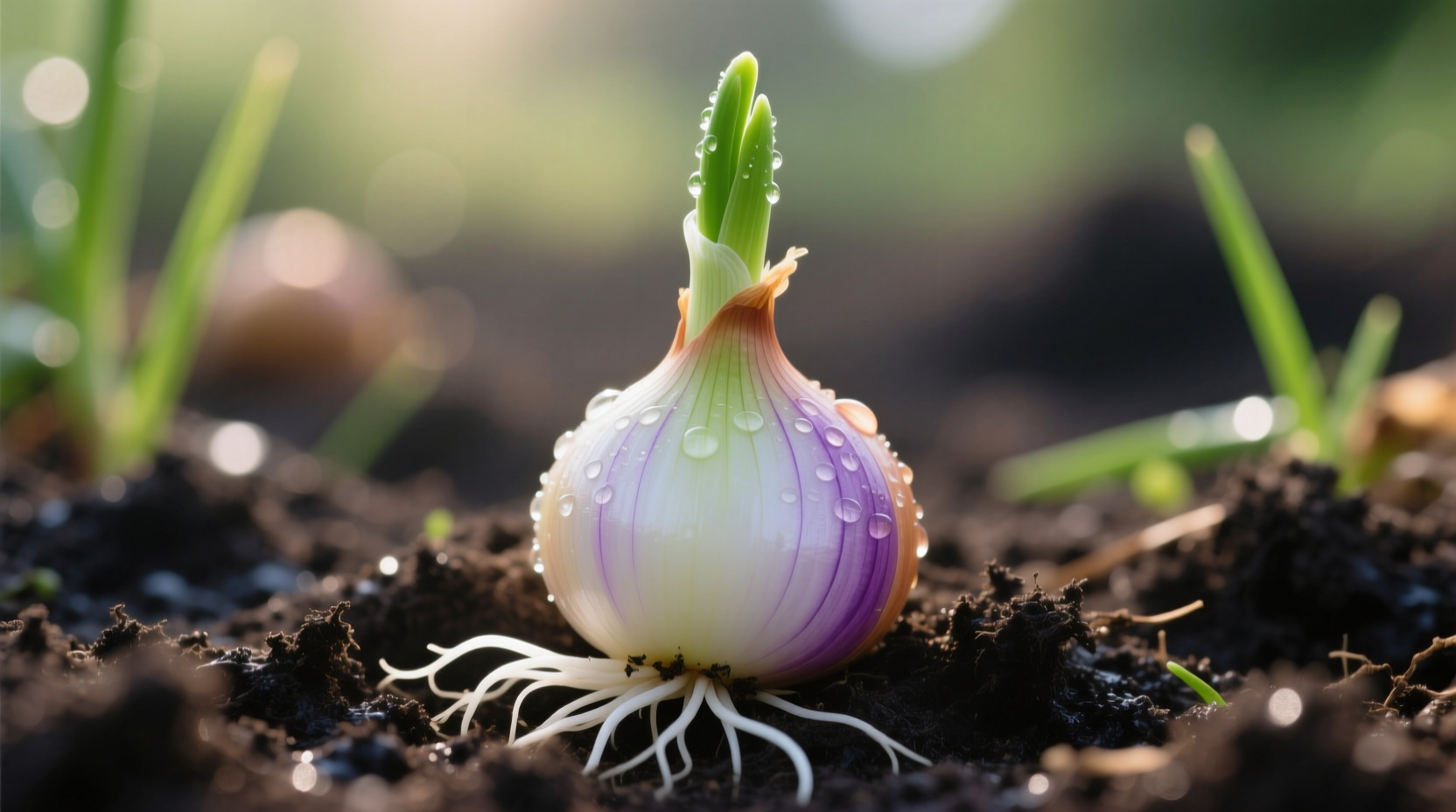Home gardeners can produce flavorful, chemical-free onions with proper technique. Whether you're a beginner or experienced grower, understanding the complete onion lifecycle from planting to storage ensures a bountiful harvest. This guide provides science-backed methods used by agricultural experts to maximize your onion yield while avoiding common pitfalls.
Choosing the Right Onion Type for Your Climate
Selecting appropriate onion varieties is critical for success. Onions are categorized by their daylight requirements, which determine when they form bulbs:
| Onion Type | Daylight Requirement | Best Regions | Harvest Time |
|---|---|---|---|
| Short-Day Onions | 10-12 hours | South of 35°N latitude | Early summer |
| Intermediate-Day Onions | 12-14 hours | 30°-40°N latitude | Mid-summer |
| Long-Day Onions | 14-16 hours | North of 35°N latitude | Late summer |
According to the USDA Agricultural Research Service, matching your onion type to your geographic location prevents premature bulbing or failure to bulb. Gardeners in southern states should select short-day varieties like 'Texas Super Sweet', while northern growers achieve best results with long-day types such as 'Walla Walla'.
Soil Preparation and Planting Timeline
Proper soil preparation creates the foundation for healthy onion growth. Onions require loose, well-drained soil rich in organic matter. Follow this planting timeline based on your last frost date:
- 6-8 weeks before last frost: Start seeds indoors or purchase sets/transplants
- 2-4 weeks before last frost: Prepare garden bed with 3-4 inches of compost
- Last frost date: Plant sets 1-2 inches deep, 4-6 inches apart in rows 12-18 inches apart
- 30 days after planting: Apply balanced fertilizer (10-10-10)
- 60 days after planting: Reduce nitrogen, increase potassium
- When tops fall over: Harvest onions
The University of Minnesota Extension recommends testing soil pH 2-3 weeks before planting. Onions grow best in slightly acidic to neutral soil (pH 6.0-6.8). If your soil tests below 6.0, incorporate garden lime according to package instructions.

Watering and Fertilization Requirements
Consistent moisture is crucial for onion development. Water requirements change throughout the growing season:
- First 4 weeks: 1 inch of water weekly to establish roots
- Bulb formation stage: 1-2 inches weekly, keeping soil consistently moist
- Final 3 weeks before harvest: Gradually reduce watering to prepare for curing
Avoid overhead watering which promotes disease. Drip irrigation or soaker hoses deliver water directly to roots while keeping foliage dry. The Oregon State University Extension notes that inconsistent watering causes splitting and increases disease susceptibility.
Troubleshooting Common Onion Growing Problems
Even with proper care, gardeners encounter challenges. Recognize these common issues and their solutions:
Pests
- Onion maggots: White larvae that tunnel through bulbs. Prevent with floating row covers and crop rotation.
- Thrips: Tiny insects causing silvery streaks on leaves. Control with insecticidal soap or neem oil.
Diseases
- Downy mildew: Purple-gray mold on leaves. Prevent with proper spacing and avoiding overhead watering.
- Pink root: Pink discoloration of roots. Manage through crop rotation and soil solarization.
According to Cornell University's Plant Disease Diagnostic Clinic, proper air circulation through appropriate spacing (4-6 inches between plants) significantly reduces fungal disease incidence.
Harvesting and Curing Techniques
Timing your harvest correctly ensures maximum storage life. Watch for these maturity indicators:
- Natural falling over of tops (80% of plants)
- Neck softening and beginning to collapse
- Outer skin turning papery and dry
To harvest:
- Lift bulbs carefully with a garden fork
- Cure in a warm, dry, well-ventilated area for 2-3 weeks
- Trim roots to 1 inch and tops to 1 inch after curing
- Store in mesh bags in cool (32-40°F), dry (65-70% humidity) conditions
The Penn State Extension reports properly cured onions can store for 4-6 months, while improperly cured bulbs may rot within weeks. Never skip the curing process, as this critical step seals the outer layers and prevents moisture loss during storage.
Climate-Specific Growing Considerations
Successful onion growing requires adapting techniques to your local conditions:
- Hot climates: Plant in fall for winter/spring harvest. Use shade cloth during extreme heat.
- Cool climates: Start seeds indoors 8-10 weeks before last frost for larger bulbs.
- Humid regions: Increase spacing to 6 inches and use disease-resistant varieties.
- Dry regions: Apply 2-3 inches of mulch to conserve moisture and regulate soil temperature.
Gardeners in USDA zones 7-11 should plant in fall for spring harvest, while zones 1-6 achieve best results with spring planting for summer harvest. The USDA National Agricultural Statistics Service confirms regional adaptation accounts for 40% of onion growing success variance.
Frequently Asked Questions
How deep should I plant onion sets?
Plant onion sets 1-2 inches deep with the pointed end up. In heavier soils, plant shallower (1 inch), while sandy soils can accommodate slightly deeper planting (2 inches). Proper depth prevents premature sprouting and ensures optimal bulb development.
Why are my onion tops falling over before harvest?
Onion tops naturally fall over when bulbs have reached maturity, typically 90-120 days after planting. This signals it's time to stop watering and prepare for harvest. Premature falling may indicate drought stress, pest damage, or disease, so check bulb development before harvesting.
Can I grow onions in containers?
Yes, onions grow well in containers at least 8 inches deep with drainage holes. Use potting mix rather than garden soil, and maintain consistent moisture. Container-grown onions require more frequent watering and fertilization but can produce full-sized bulbs with proper care.
How do I prevent my onions from bolting?
Bolting (flowering) occurs when plants experience temperature fluctuations. Prevent bolting by planting at the correct time for your climate, using appropriate varieties, and avoiding early planting when frost risk remains. If bolting occurs, remove flower stalks immediately as bulbs won't store well once flowering begins.











 浙公网安备
33010002000092号
浙公网安备
33010002000092号 浙B2-20120091-4
浙B2-20120091-4